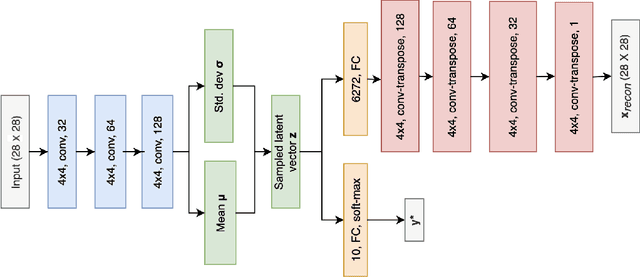Gaurav Nuti
Arctic-Embed 2.0: Multilingual Retrieval Without Compromise
Dec 03, 2024Abstract:This paper presents the training methodology of Arctic-Embed 2.0, a set of open-source text embedding models built for accurate and efficient multilingual retrieval. While prior works have suffered from degraded English retrieval quality, Arctic-Embed 2.0 delivers competitive retrieval quality on multilingual and English-only benchmarks, and supports Matryoshka Representation Learning (MRL) for efficient embedding storage with significantly lower compressed quality degradation compared to alternatives. We detail the design and implementation, presenting several important open research questions that arose during model development. We conduct experiments exploring these research questions and include extensive discussion aimed at fostering further discussion in this field.
Arctic-Embed: Scalable, Efficient, and Accurate Text Embedding Models
May 08, 2024Abstract:This report describes the training dataset creation and recipe behind the family of \texttt{arctic-embed} text embedding models (a set of five models ranging from 22 to 334 million parameters with weights open-sourced under an Apache-2 license). At the time of their release, each model achieved state-of-the-art retrieval accuracy for models of their size on the MTEB Retrieval leaderboard, with the largest model, arctic-embed-l outperforming closed source embedding models such as Cohere's embed-v3 and Open AI's text-embed-3-large. In addition to the details of our training recipe, we have provided several informative ablation studies, which we believe are the cause of our model performance.
Assessing the Quality of the Datasets by Identifying Mislabeled Samples
Sep 10, 2021



Abstract:Due to the over-emphasize of the quantity of data, the data quality has often been overlooked. However, not all training data points contribute equally to learning. In particular, if mislabeled, it might actively damage the performance of the model and the ability to generalize out of distribution, as the model might end up learning spurious artifacts present in the dataset. This problem gets compounded by the prevalence of heavily parameterized and complex deep neural networks, which can, with their high capacity, end up memorizing the noise present in the dataset. This paper proposes a novel statistic -- noise score, as a measure for the quality of each data point to identify such mislabeled samples based on the variations in the latent space representation. In our work, we use the representations derived by the inference network of data quality supervised variational autoencoder (AQUAVS). Our method leverages the fact that samples belonging to the same class will have similar latent representations. Therefore, by identifying the outliers in the latent space, we can find the mislabeled samples. We validate our proposed statistic through experimentation by corrupting MNIST, FashionMNIST, and CIFAR10/100 datasets in different noise settings for the task of identifying mislabelled samples. We further show significant improvements in accuracy for the classification task for each dataset.
 Add to Chrome
Add to Chrome Add to Firefox
Add to Firefox Add to Edge
Add to Edge